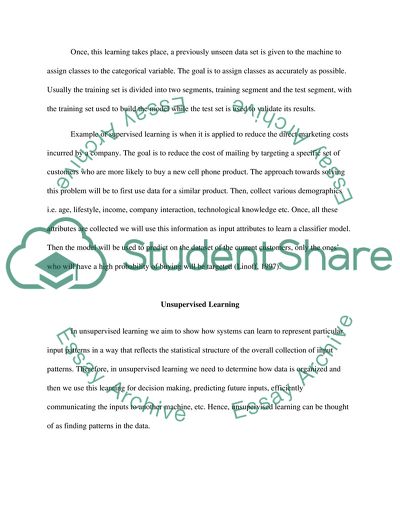Cite this document
(Machine Learning Algorithms and Tools Essay Example | Topics and Well Written Essays - 2000 words, n.d.)
Machine Learning Algorithms and Tools Essay Example | Topics and Well Written Essays - 2000 words. Retrieved from https://studentshare.org/information-technology/1731633-machine-learning
Machine Learning Algorithms and Tools Essay Example | Topics and Well Written Essays - 2000 words. Retrieved from https://studentshare.org/information-technology/1731633-machine-learning
(Machine Learning Algorithms and Tools Essay Example | Topics and Well Written Essays - 2000 Words)
Machine Learning Algorithms and Tools Essay Example | Topics and Well Written Essays - 2000 Words. https://studentshare.org/information-technology/1731633-machine-learning.
Machine Learning Algorithms and Tools Essay Example | Topics and Well Written Essays - 2000 Words. https://studentshare.org/information-technology/1731633-machine-learning.
“Machine Learning Algorithms and Tools Essay Example | Topics and Well Written Essays - 2000 Words”. https://studentshare.org/information-technology/1731633-machine-learning.


